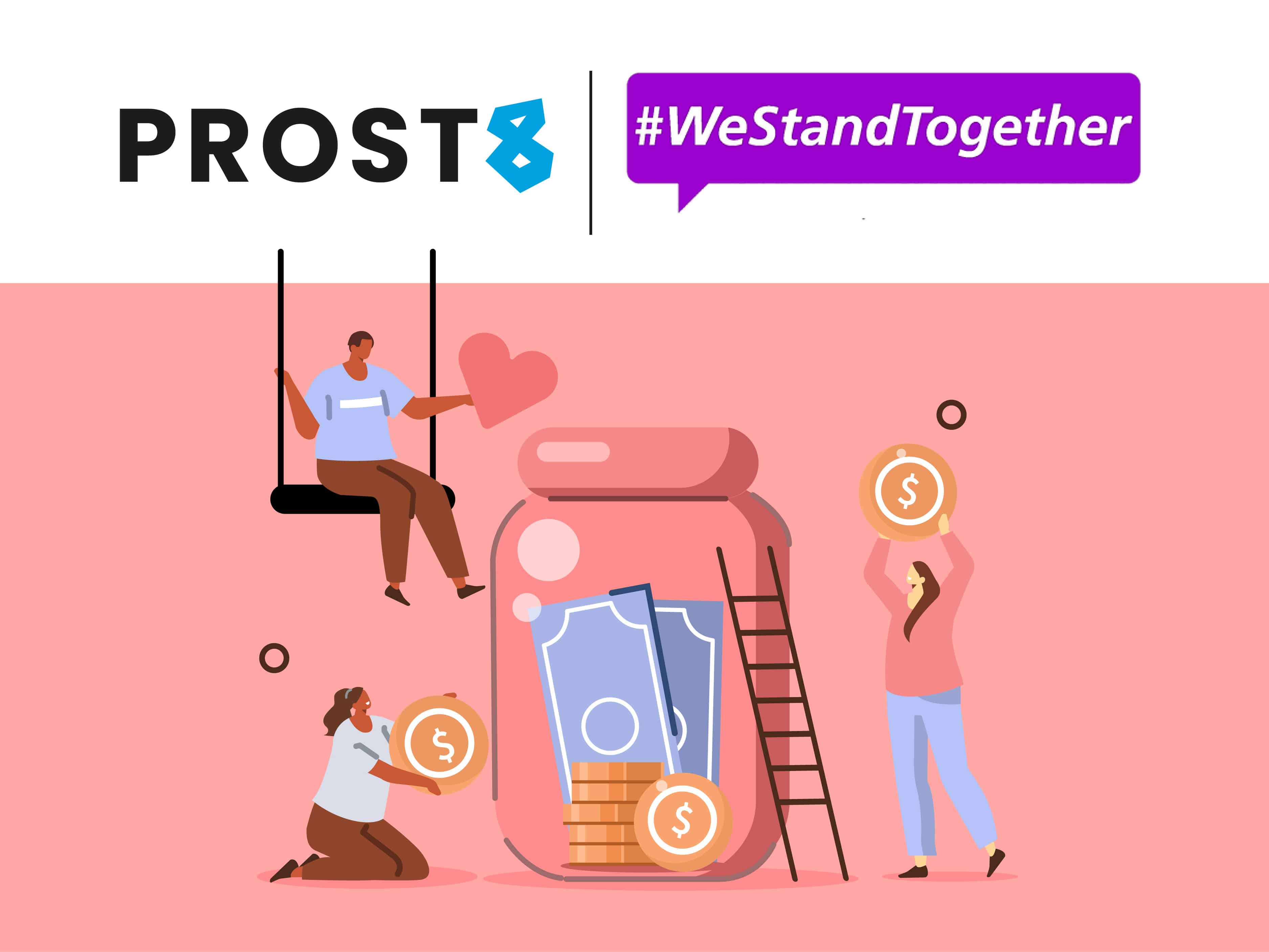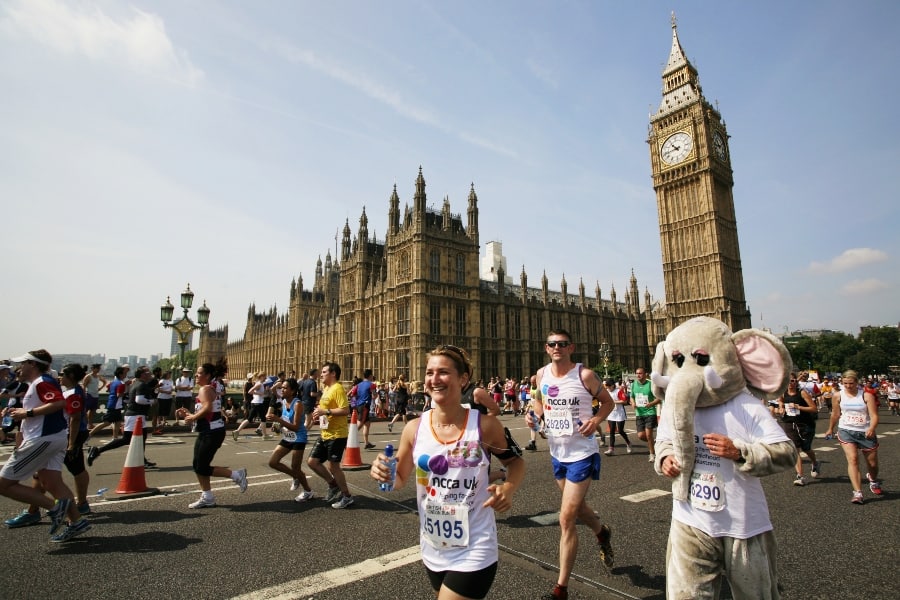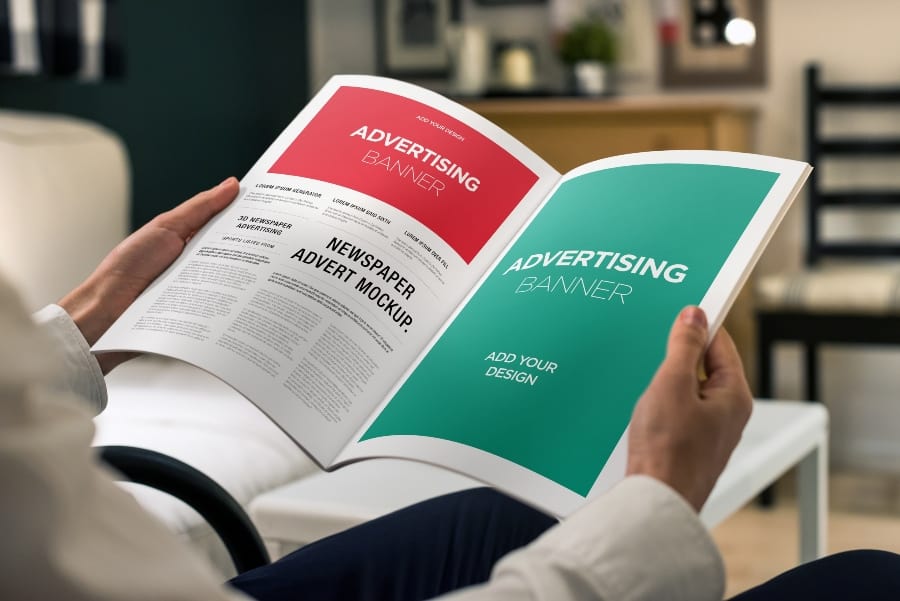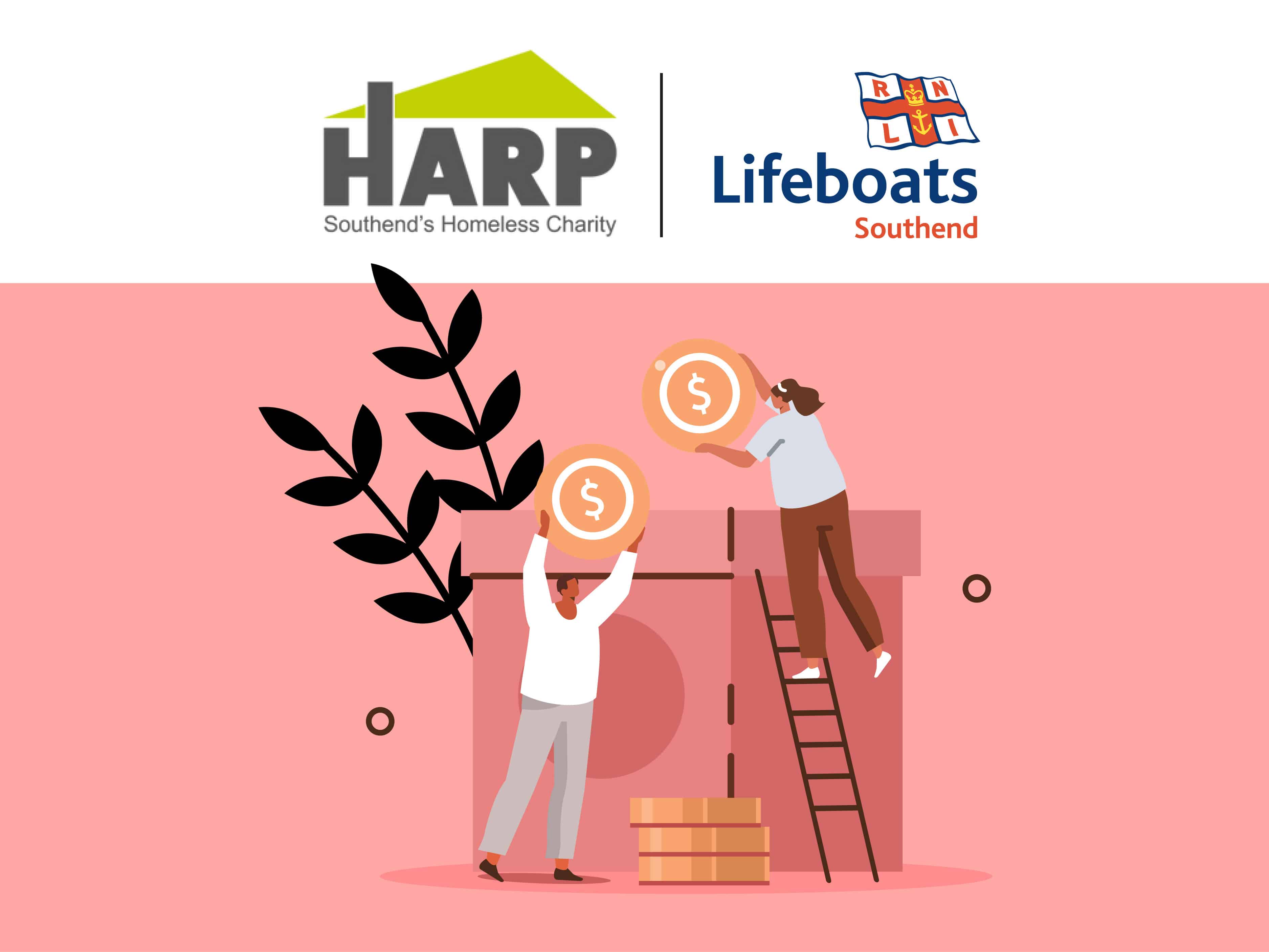Starting out in fundraising can seem daunting, but it’s all about taking the first step. We’ve spoken to two veterans of the charity sector who have over 50 years of combined experience in raising funds and awareness.
Paul Sayer, founder of Prost8, and Jonny Wineberg, founder and director of We Stand Together, have provided their invaluable knowledge on the following topics:
- Starting out in fundraising
- Goal setting
- Building a database of subscribers
- Raising funds
- Fundraising methods
- Events-based fundraising
- Promoting events
- The value of print marketing
- Collecting donations
- Restricted and unrestricted funds
- Maintaining donor relationships
- Celebrity endorsements
Starting out in fundraising
Begin by defining your cause, setting a clear goal, and identifying your target donors. Develop a fundraising plan that outlines your strategies, timelines, and resources required. Identify potential donors, devise a strategic plan, and craft a compelling story. Research what motivates your donors to give and implement fundraising strategies that engage these reasons. Start with a small, manageable campaign before scaling up to larger fundraising initiatives. It’s important to note that fundraising isn’t just about the money, it’s about building strong connections with your supporters and spreading awareness about your cause.
Paul’s experience:
“Running a charity is exactly the same as running a business. It’s the same principle as creating a business plan for your charity.
“You’ve got to cost it out. So for year one, it might cost you £80,000 to run your charity. You then have to look outside those running costs and think: ‘to raise that money, we need to do this, this and this’.
“When charities start out, lots of them see how wide larger charities can reach and how much money they raise, so assume they’ll be the same. People forget to think, how the hell do we actually raise that money?
“Think about how you intend to raise money. When you think about it like this, it makes a lot of people realise charity isn’t just something you get given money for. You have to work for it. You have to make sure you find ways to get the money in and achieve your goals.
“Because there’s nothing worse than going through the trouble of setting up a charity and putting in all the effort, to be sat there three months later with nothing. Or even worse, in debt, which is really frowned on as a charity.
“You’re supposed to always have two to three months’ running costs in reserve. If your reserve starts being eaten into, it could be a reason for the Charity Commission to start investigating you.”
Jonny’s experience:
“Before you can raise any funds, you need to be constituted in the most appropriate way. Nowadays that means either as a small charity, where you are not registered with an outside regulator, or as a Charitable Incorporated Organisation (CIO). It’s important to note, if your turnover goes over £5,000, you have to register with the Charity Commission.
“The best model is a CIO, which means that you register with the Charity Commission but also have limited liability as an incorporated entity, giving some protection to the trustees.
“You will need at least 3 trustees who are not employees. It opens up the most funding opportunities by virtue of being a charity. There are two main models:
- Associations where you wish to have trustees elected via an AGM.
- Foundations where the charity is solely controlled by appointed trustees.
“If you want to pay directors, a Community Interest Company may work for you. This is often right for social enterprises. However, it means that over 80% of grant funders would not be accessible. There are other models such as Industrial & Provident Societies, however, I do not recommend these as CIOs can offer more benefits.”
Goal setting
Goal setting is vital to any fundraising effort. Without a clear goal, it’s challenging to measure progress or motivate potential donors. One great way of clearly defining your goals is to make them SMART: Specific, Measurable, Achievable, Relevant, and Time-bound. Are you aiming to raise a specific amount? Attract a certain number of new donors? Or increase recurring donations? Your goals should be ambitious, yet achievable. They provide direction for your charity and a benchmark for success in both the long and short term.
Paul’s experience:
“Goal setting for a charity works exactly the same as for a business. At the end of the day, it’s a business, you’ve got to make money to achieve your aims.
“Effectively, look at it like an events business. Imagine you’re an events company and you need to do four events this year to make a profit. Transfer that to a charity and say, we need four events this year to produce the profit to achieve our aims. Know your costings so you know how much profit you need to make to reach your aims.”
Jonny’s experience:
“Funders now are far more likely to give to projects rather than organisations, so you should look to identify the different projects you do.
“I know that ‘SMART’ is the common term used to define goals but I prefer telling people to set ‘SMARTER’ outcomes (Specific, Measurable, Agreed, Realistic, Timebound, Exciting & Rewarding).”
Building a database of subscribers
Your database is key to maintaining consistent engagement with your charity’s supporters. A robust database of subscribers is a charity’s backbone. It’s your reservoir of potential donors, volunteers, and advocates. Start by encouraging website visitors to sign up for newsletters, whether that’s through email or print. Through this, you can provide them with regular updates about your cause, upcoming events, and the real-world impacts of their donations. From here, you can start collecting more specific data, such as contact information, donation history, volunteer involvement, and areas of interest. Remember to respect privacy laws and try not to overload your supporters with information as they might see this as spam which could result in them unsubscribing. Find the right balance!
Paul’s experience:
“You need to build a database or spend big money to let people know about your upcoming events. It’s the easiest way of updating people and telling them where to donate.
“Subscriber databases are important for a charity because they allow you to communicate to people easily and can provide a regular stream of income through subscriber donations.”
Jonny’s experience:
“Every time someone uses your centre calls you or engages with you in any way, they’re a potential donor. You should be collecting their information, especially email addresses and phone numbers so that you can contact them and ask them to support you.
“A donor base is a database of donors that you should grow through every means possible. Whilst events may raise some funds, their primary purpose should be to get more people on your donor base. A good donor base is the key to unlocking many other funding opportunities.”
Raising funds
For most charities, fundraising involves a mix of strategies, from direct appeals, grant applications, and corporate partnerships, to online fundraising. The key is diversification—don’t rely on a single source. Instead, create multiple revenue streams to ensure financial stability. Keep in mind that most plans will require some financial outlay, so make sure to consider all your expenses and estimated income to ensure your charity achieves a meaningful return on its investment.
Paul’s experience:
“I think there’s a misconception when it comes to raising funds, especially at larger events. If you sell tickets for an event, the likelihood is that you won’t make a penny on them.
“A lot of people think, if they have an event for 50 people at £25 a head, with quick maths it seems like an easy way to make a lot of money. You’ve got to look at it like a business. Think about what your costs are and how you’re going to cover those.
“More than likely, they’ll cover the cost of venue hire, food, drink, entertainment, sound system, print, advertising, and staff that you need on the night. So that ticket price is generally gone before your event has even started.
“So then you have to look at what you do on the night to make money. One of the most successful ways to make a profit at events like this is a raffle with tickets and prizes. Try to find some sponsors or corporate sponsors who can either help donate to your raffle or can reduce your overall costs on the night.”
Jonny’s experience:
“Whether it be renting your premises as meeting space, selling training programmes, selling other services or products, you shouldn’t be afraid of generating income from sales. You can set up a separate social enterprise or just sell as part of your normal charitable activity.
“Investigate setting up an eBay shop; create your own online shop; ask your users for donations to sell; market yourselves on the web, through local leafleting; supermarkets; doctor’s surgeries; hospitals and anywhere else you can think of. Your users and supporters may have other ideas, so ask them and see what might be possible.”
Fundraising methods
Fundraising methods typically involve events, campaigns, or other activities designed to generate financial support. From charity runs to bake sales to online crowdfunding, fundraising comes in all shapes and sizes. The key to its success lies in careful planning, clear communication, clear objectives and a well-defined target audience. It’s important to engage potential donors with a scheme or event that’s enjoyable or challenging.
Paul’s experience:
“When you think about what charities do to raise funds, there are no limits. From curry nights to marathons, it’s limitless what you can do.
“The important thing with fundraising is finding ideas that suit your supporter base. Try to find things that you think your followers are likely to get involved in, support and most importantly donate towards.
“It’s crucial to be flexible with the way you fundraise. Your supporters are likely to be more motivated to take part in their preferred way. Some will get involved in a physical challenge whereas others may prefer an evening event with a meal and raffle draw.”
Jonny’s experience:
“Trying to do just one thing to raise funds is a big mistake, particularly now that there is less money to go around. You should have a diverse fundraising strategy that includes applying to statutory funders, charitable trusts and companies. As long as an idea doesn’t require too large an investment, you should go for it. Not trying will lead to stagnation and decline.
“Online fundraising now makes up over 30% of charity giving and the range of fundraising opportunities online continues to grow, so take advantage of them.”
Events-based fundraising
Events-based fundraising can be an engaging way to generate funds. Events, both virtual and in-person can help foster community, engage supporters, and provide a platform for donations. These provide an interactive platform for donors to connect with your cause and witness the impact of their contribution first-hand. Make each event unique, align it with your cause, and focus on creating memorable experiences. Successful event fundraising relies on careful planning, effective promotion, and smart execution.
Paul’s experience:
“If you’re struggling with event ideas, I’d suggest looking at what other charities do and see if it would be right for you to copy. Plagiarising is the best way to generate ideas for your charity, although, it’s got to be relevant to your audience.
“Equally, go to events where someone does the organising for you, such as the London Marathon. It’s always difficult to step outside your capabilities, so try and look internally first and see what you can do with your own resources and knowledge.
“It’s important to make it memorable because people will only raise funds and spread your message if they remember something fun or poignant linked to the charity. Getting children involved and making it fun for the whole family is a great way to do this.”
Jonny’s experience:
“It takes a lot of planning and people hours to put on a good fundraising event, so make it count for as much as possible. Sell raffle tickets in the weeks and months leading up to the event, with the final sales and draw on the night.
“See if local shops would allow you to sell raffle and event tickets there or if you could do it in your local high street. Get sponsors for the event and sell them getting their logo on tables, in a brochure, on tickets etc.”
Promoting events
How will anyone hear about your event if you don’t shout about it? Promoting events is all about reaching the right audience at the right time. Use a mix of digital marketing strategies like email marketing, social media promotion, and online ads. Don’t forget traditional methods like press releases, posters, and word of mouth. Tailor your messaging to each platform or audience and make it easy for people to participate or donate. Ensure your message is clear, concise, and compelling, and always include a call to action.
Paul’s experience:
“On local events, word of mouth is the best way. With it’s national events, cash in on anything that’s existing already from the organisers.
“If you’re taking part in something like the London Marathon, the promotion gets done for you. However, if it’s your own event which requires self-promotion, social media is hard to beat now. It’s a huge tool for promoting your charity before, during and after events to your supporters.”
Jonny’s experience:
“Promote the event through all possible channels such as popping into companies and selling them raffle tickets. Have a discounted price for full tables (£900 instead of £1,000 for 10 tickets). Depending on your target population, a cheaper event and requesting pledges could be another way to go.”
The value of print marketing
Print marketing is invaluable. It’s tangible and often has a longer shelf life. Direct mail, Brochures, or charity newsletters can tell your tale in a more intimate, tactile and personal way. Use print marketing to convey your charity’s story, highlight your impact, and invite potential donors to get involved.
Paul’s experience:
“Print is a critical part of a charity. Social media’s a fleeting moment. People go through and it’s forgotten in a heartbeat. But if you put something like a Poster in someone’s hand, or if you’re in an environment where you’ve got Roller Banners in the background, that’s amazing as it reinforces your message.
“Combining that in a social post is brilliant. When you’ve got Banners with sponsors on and the right design, you can send such a powerful message by using print. It’s really important and so cheap!”
Jonny’s experience:
“Hard copy can still have more impact as the swathe of electronic messages we receive nowadays means that electronic communication is easy to ignore. Print can definitely provide a more memorable impact.”
Collecting donations
Collecting donations requires clear, secure, and user-friendly methods. It should be effortless for each donor to give. Collecting donations involves making it as easy as possible for donors to give. Offer multiple donation options, such as online payments, checks, and mobile transactions. Invest in secure, user-friendly donation software. Transparency is crucial, so provide clear information about how funds will be used and ensure to provide clear information about how funds will be used and update donors on the impact of their gifts.
Paul’s experience:
“Nowadays there are two ways to collect donations: physically or electronically. Electronic donations can make your life easier. Going around with a card reader can solve an issue easily if someone says they don’t have any cash on them. Set your card machine for a fixed price so all they have to do is tap.
“Card readers are a cheap one-time purchase and they’ll charge a small fee when you use them, so everything on top of that is yours. PayPal is brilliant. If you don’t have a PayPal account get one. QR codes are coming back into fashion now too. They’re so easy to scan and take you straight to your donation page on your website.
“Obviously, if they’ve got cash that’s brilliant, but so many people don’t today which is why having a card machine is important. When people do have cash, bucket shakes are great for collecting donations. They also make a bit more noise to catch people’s attention!
“I must add, always, always, always have your bank account details handy, so you can transfer it to here.”
Jonny’s experience:
“I find it amazing that people working for charities are squeamish about requesting money. Twice a year, usually around Christmas and early Summer, you should be sending out donation requests and making phone calls following them up. It doesn’t have to be a hard sell, just asking for a pledge.
“Make sure you have an easy way for people to donate online – wonderful.org is the best value I have found but you can use PayPal or several others. Make sure your donation button is at the top of your website and on every page. Investigate text giving, theBigGive.org.uk and apply for Google Grants to get free Google AdWords to draw in visitors to your website who can donate to you.
“You can also offer people the opportunity to advertise with you – use your newsletter, website or any other publication to ask. And, of course, these are the people who can come to an event, buy a raffle ticket or support you in many other ways!”
Restricted and unrestricted funds
The funds you receive can be categorised in two types: restricted and unrestricted.
- Restricted: donations made for a specific purpose or project within the charity.
- Unrestricted: money that can be used for any purpose.
While restricted funds can drive specific initiatives, unrestricted funds provide financial stability and flexibility, making them a crucial part of a charity’s financial health.
Paul’s experience:
“When we’re given a large sum of money to rent a machine going for a year, those funds would be restricted. So, if the charity was running short of money, those restricted funds are unusable for anything other than its intended use.
“Generally speaking, donations are unrestricted; you can do with that money as you please.
“We had a grant early on from the National Lottery Fund, who wanted us to raise awareness for men in the local area. This was restricted to that. We had to report to them, show what we did with it and show what the outcomes were. You’ve got responsibilities to answer to donors and responsibilities of how you spend the money.”
Jonny’s experience:
“The key thing to remember is that any of your own fundraising will always be unrestricted. Grants are usually restricted but in some instances, they’re not, make sure you know when they’re not! I urge you to check up regularly with your accountant as they can get things wrong.”
Maintaining donor relationships
Maintaining donor relationships goes beyond acknowledging donations. It’s about keeping donors engaged and involved. Regular updates, personalized communication, and invitations to events can make donors feel valued. Always express gratitude, and demonstrate the difference their contributions make. Remember, a loyal donor is often more valuable than a one-time large donor in the long term.
Paul’s experience:
“Try and always capture contact details as soon as you get a donation.
“I always ask people, ‘Are you happy for me to put you on our mailing list? We’ll keep you updated on future events’. Social media has now become another mailing list to maintain donor relationships.”
Jonny’s experience:
“I’d encourage you to regularly email your supporters with updates on what’s happening with your organisation and ways they can support you.
“Keep your donors informed directly, don’t just rely on them reading your social media! Work out if letters or other hard copies would be best or use the free options of email, text, WhatsApp etc.
“Always follow up with those you have applied to, whether a grant is received or not. Record when to apply again on a spreadsheet and get your application drafted and off in good time. Send them reports, publications and so on whether they have given you funds or not, helping make you memorable and more likely to receive funds again/next time.”
Celebrity endorsements
Celebrity endorsements can amplify your charity’s message and reach. The right celebrity can attract media attention, lend credibility to your cause, and influence their followers to donate. However, it’s crucial to align with a celebrity who genuinely resonates with your cause to maintain authenticity and ensure a mutually beneficial relationship. Where possible, their commitment should go beyond a simple endorsement to authentic engagement with the organization.
Paul’s experience:
“The best way to use celebrity endorsement with your charity is finding someone that has a connection to your cause. If you can get someone on board, you can gain access to their potentially huge database of followers. If they put out an appeal for you, then even a small response can get a big return in donations.”
Jonny’s experience:
“If you can get a celebrity that may help, but look for someone who might support you for free because they are local or have a link with your issue. If you do pay – haggle!”
The show must go on!
With the guidance of two experts, seize these tools to take your fundraisers to the next level. If you need some printed materials to complement your event, Solopress will be here to help you every step of the way.











